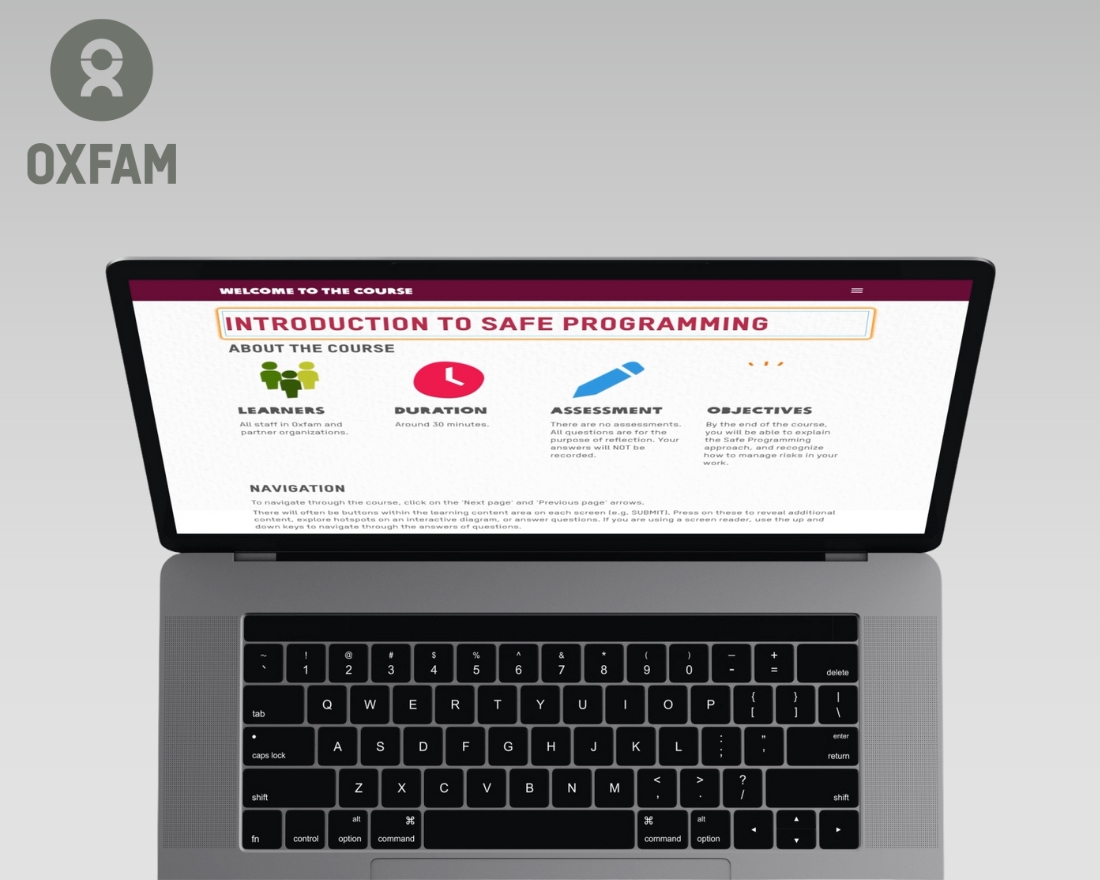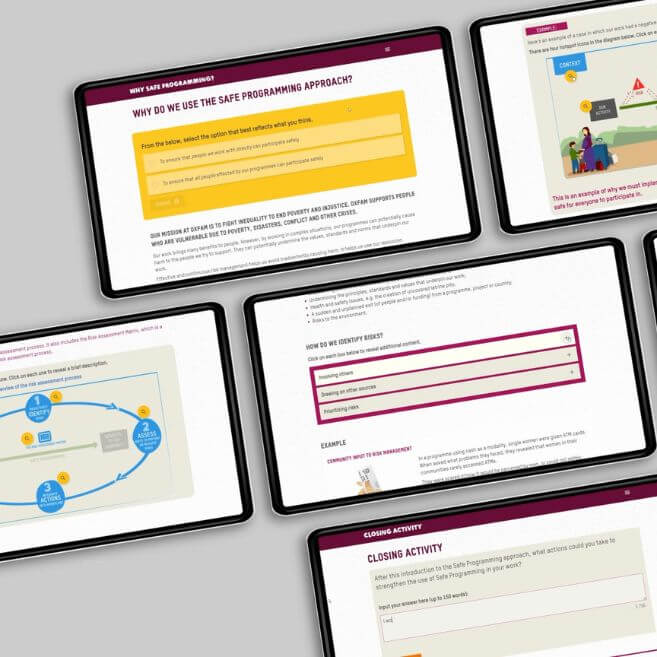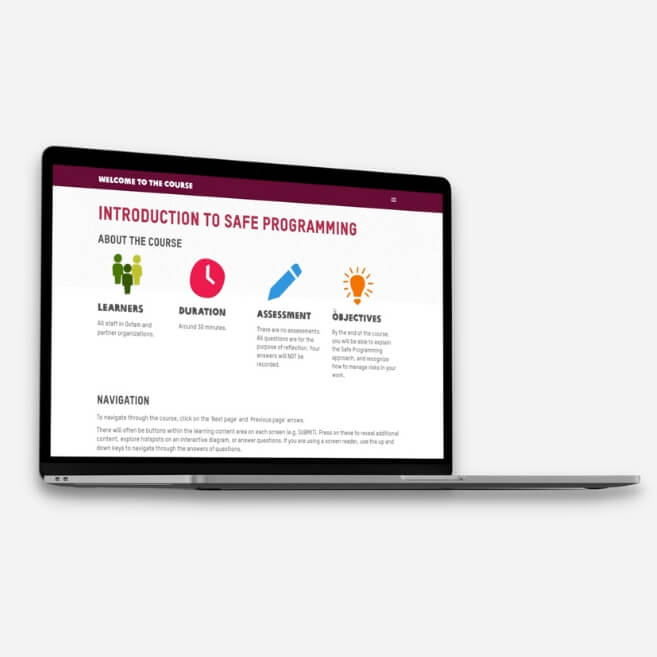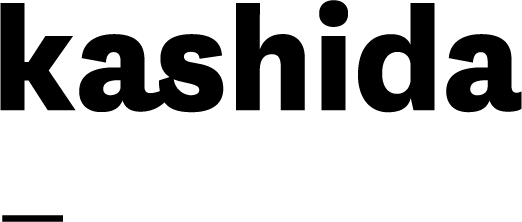CASE STUDIES

OXFAM - INTRODUCTION TO SAFE PROGRAMMING
Founded in 1942, Oxfam is a global movement of people who are fighting inequality to end poverty and injustice. Comprising of 21 independent charitable organisations across the globe, Oxfam’s training needs are naturally complex – so they brought Kashida in to develop an introductory online course to help introduce critical risk management approaches to employees and partner organisations, whilst also being highly accessible for those with impairments.
SERVICES USED:
Learning experience design, learning production
INDUSTRY:
Not for profit / charitable organisation
KEY INFORMATION_
ENGAGING ONLINE TRAINING
Oxfam came to Kashida with a very specific learning challenge: they wanted to develop an introductory online course in order to provide a structured overview to their risk management approach, known as Safe Programming. And it had to be delivered in four different languages: French, Arabic, English and Spanish. As this was a new first step in a well-established learning pathway, it was critical that we aligned with both the brand, tone of voice and existing training so as to ensure this course felt fluid and part of the overall learning experience.
Because this information touched on safeguarding, protection and risk management, it was vital learners engaged with the learning at hand, and retained the information long into the future. Our human-centred design approach ensures maximum knowledge retention and when developing this course we leveraged a range of interactive elements such as self-assessments and scenario-based exercises. This approach encouraged learners to reflect on their knowledge as well as apply it through real-life Oxfam examples.

“Kashida is uniquely positioned as a learning technology company that can support the transformation of learning in a truly global, multi-cultural organization.”

BUILT FOR INCLUSION_
Our primary aim was to make this course relatable and ensure the information was easy to understand. But that wasn’t our only focus; Oxfam had very clear requirements around accessibility standards, so we built this course with WCAG2.0 standards in mind.
That means that as well as translating the course content into four languages, we also ensured the course was accessible for people with hearing and visual impairments. Some of the key considerations we made included support for screen readers and keyboard navigation, well-crafted semantic HTML5 to help learners understand the structure of pages as well as ensuring our choice of language, colours, text styles and images were all accessibility friendly.

